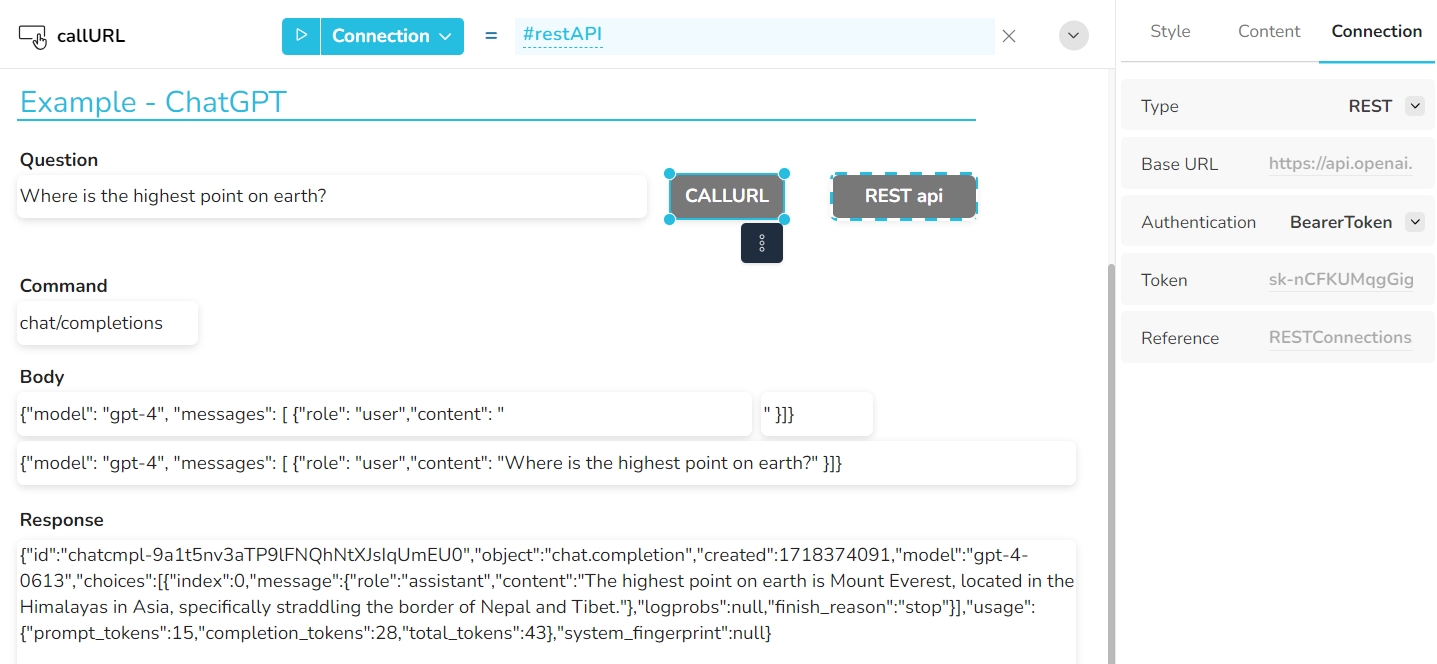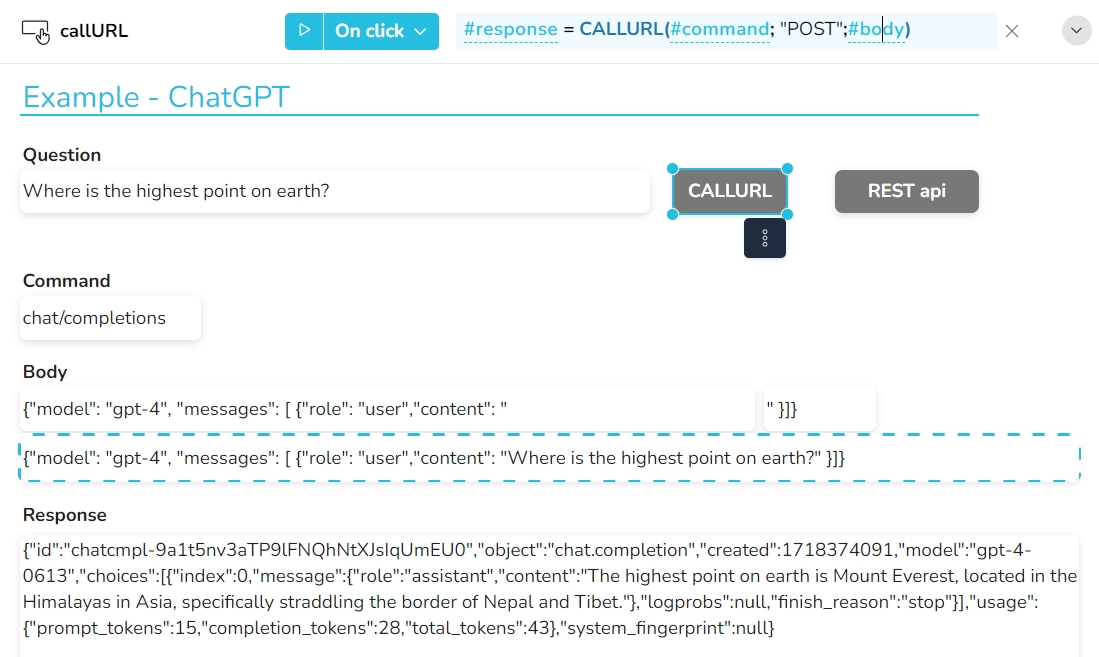CALLURL
Returns the result of an http-based url request.
Syntax
CALLURL(url; method; body; header)
url - the url to which the request is sent - Value type: text
method - the http request method ("GET", "POST", "DELETE", ...) - Value type: text (optional, default: "GET")
body - the body data of the http request - Value type: text (optional, default: empty)
header - the header of the http request - Value type: text (optional, default: empty)
Remarks
The function returns the result of the http request as text.
If the url request returns any mime type other than text/…, application/javascript, application/json, application/xml, the function returns !ERROR.
Linking the CALLURL function with a database widget
It is possible to use an authentication for the CALLURL function that is stored in a REST or Essbase connection. This allows requests to be sent directly to a REST api with corresponding authentication or to the REST api of an Essbase server, for example.
The widget for which the connection is defined is stored as a reference in the connection formula.
Example 1
After clicking on the CallURL button, the url from the top cell widget is sent, and the result is assigned to the bottom cell.

In this example, a post request is sent to a url, including body and header information.

Example 2 - ChatGPT Communication
The "CALLURL" button uses the "REST api" button as a reference in the connection formula. When a request is sent with the CALLURL function, the authentication of the connection is used, in this case a bearer token (which is required by ChatGPT).


